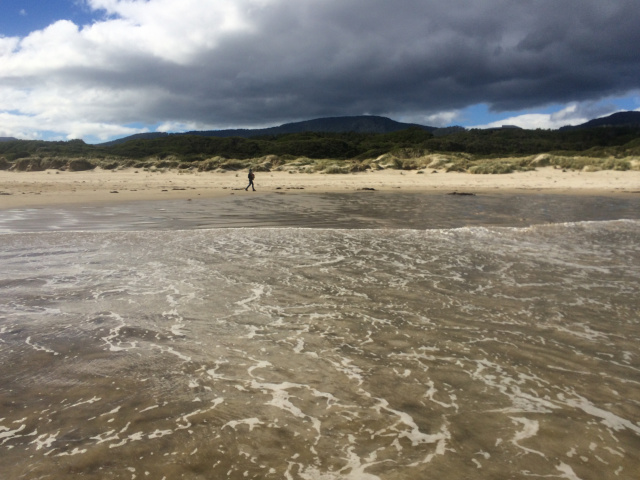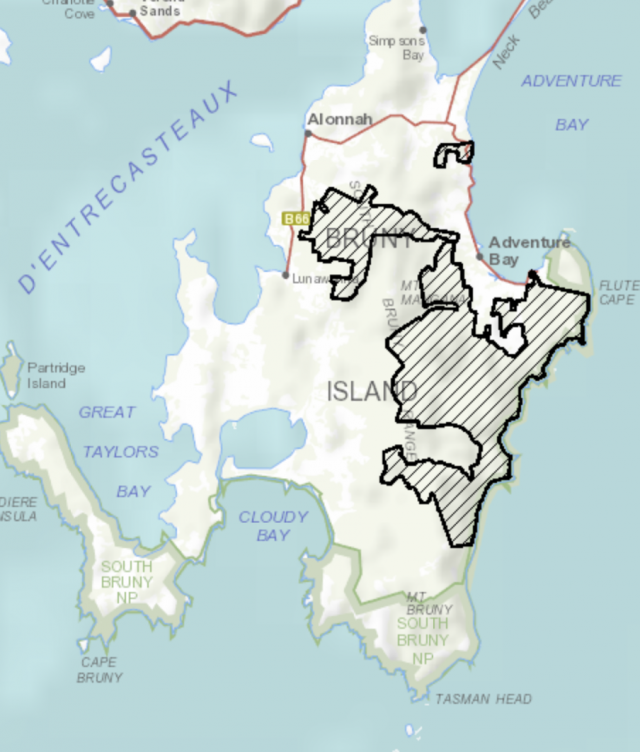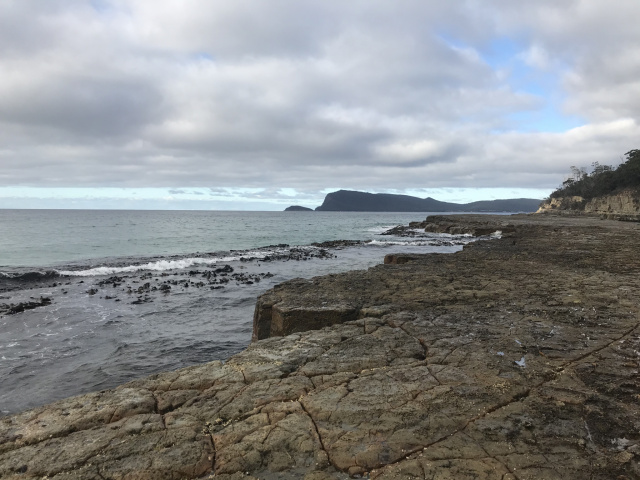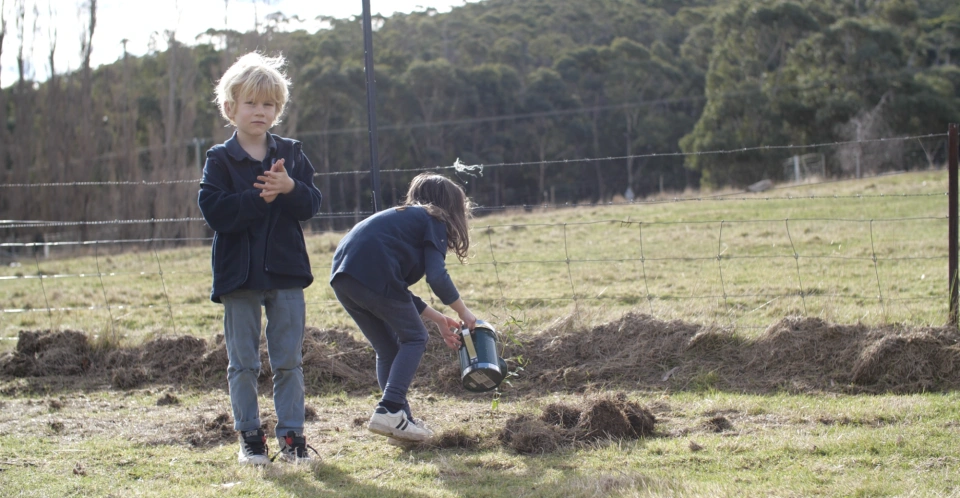A National Park for Bruny Island
Bruny Island
In assessing areas in Tasmania suitable for protection as a National Park, the National Parks and Wildlife Service as early as 1980 has formally recognised the outstanding natural values of Bruny Island, by recommending that the dolerite cliffs, beaches and coastal forests of the coastal fringe of southern Bruny Island be made a National Park.
The Liberal government of Robin Gray in the 1980s considered this idea, but part of the proposal that some private land be purchased for inclusion in the park the government couldn’t support, and so the idea sat unattended for a while. The national park proposal did have the support of many Bruny Island businesses and residents, and by then gaining the support of the Greens and the Labor party, it was eventually put formally forward by then Liberal Premier Ray Groom in the mid 1990s, and there being no significant opposition, a 5,149 hectare South Bruny Island National Park, largely made up of existing reserves, was declared in 1997 under the Liberal-Green government of Greens Leader Christine Milne and Liberal Premier Tony Rundle. (Buckman, 2008).

Local groups such as the ‘Spirit of Bruny’ and the Bruny Island Environment Network along with The Wilderness Society, Environment Tasmania and the Tasmanian Conservation Trust put subsequent proposals forward to extend the formal reserves on Bruny Island to incorporate and protect these important forests.
This eventually culminated, as part of an agreement between conservation groups and timber industry groups, the ‘Tasmanian Forest Agreement’ in 2012, in an agreement that an additional approximately 5,000 hectares of important native forests in South Bruny should be added to the formal National Park reserves estate on Bruny. This was then supported and passed through the Tasmanian parliament as reserves to be gazetted.
However, upon election in 2014, the Liberal government halted the gazettal of these forests as part of the South Bruny National Park, and declared them instead as ‘future potential production forest’, so these important forests, critical habitat to endangered species such as the Swift Parrot, currently sit in limbo and at potential risk from industrial logging.
References:
Buckman, G. (2008). Tasmania’s Wilderness Battles – A History. Allan & Unwin. Crows Nest, NSW.

An expansion and consolidation of the existing reserves on Bruny Island with these forests and other important natural areas on public land is the next inspiring step for conservation on Bruny Island, which would enable some of Bruny Island’s most important wild nature to be better protected in a broader Bruny Island National Park.


Phill Pullinger
In assessing areas in Tasmania suitable for protection as a National Park, the National Parks and Wildlife Service as early as 1980 has formally recognised the outstanding natural values of Bruny Island, by recommending that the dolerite cliffs, beaches and coastal forests of the coastal fringe of southern Bruny Island be made a National Park.
The Liberal government of Robin Gray in the 1980s considered this idea, but part of the proposal that some private land be purchased for inclusion in the park the government couldn’t support, and so the idea sat unattended for a while. The national park proposal did have the support of many Bruny Island businesses and residents, and by then gaining the support of the Greens and the Labor party, it was eventually put formally forward by then Liberal Premier Ray Groom in the mid 1990s, and there being no significant opposition, a 5,149 hectare South Bruny Island National Park, largely made up of existing reserves, was declared in 1997 under the Liberal-Green government of Greens Leader Christine Milne and Liberal Premier Tony Rundle. (Buckman, 2008).

Local groups such as the ‘Spirit of Bruny’ and the Bruny Island Environment Network along with The Wilderness Society, Environment Tasmania and the Tasmanian Conservation Trust put subsequent proposals forward to extend the formal reserves on Bruny Island to incorporate and protect these important forests.
This eventually culminated, as part of an agreement between conservation groups and timber industry groups, the ‘Tasmanian Forest Agreement’ in 2012, in an agreement that an additional approximately 5,000 hectares of important native forests in South Bruny should be added to the formal National Park reserves estate on Bruny. This was then supported and passed through the Tasmanian parliament as reserves to be gazetted.
However, upon election in 2014, the Liberal government halted the gazettal of these forests as part of the South Bruny National Park, and declared them instead as ‘future potential production forest’, so these important forests, critical habitat to endangered species such as the Swift Parrot, currently sit in limbo and at potential risk from industrial logging.
References:
Buckman, G. (2008). Tasmania’s Wilderness Battles – A History. Allan & Unwin. Crows Nest, NSW.

An expansion and consolidation of the existing reserves on Bruny Island with these forests and other important natural areas on public land is the next inspiring step for conservation on Bruny Island, which would enable some of Bruny Island’s most important wild nature to be better protected in a broader Bruny Island National Park.

You might like...

Saving wildlife on Bruny Island's roads

How do you connect with Nature?

Hobart launch: S. Group's Monica Plunkett and Javan Griffiths

The exceptional, wild Ningaloo
Newsletter
Sign up to keep in touch with articles, updates, events or news from Kuno, your platform for nature
